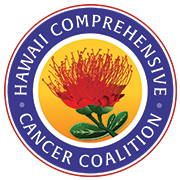Cancer Disparities Toll
Cancer disparities take a substantial toll on society in terms of premature death, lower productivity, and the costs of medical care. According to the Centers for Disease Control and Prevention (CDC), health disparities are preventable differences in the burden of disease, injury, or opportunities to achieve optimal health that are experienced by socially disadvantaged populations. These populations can be defined by factors such as race or ethnicity, gender, education or income, disability, geographic location (e.g., rural or urban), or sexual orientation. Health disparities are directly related to the historical and current unequal distribution of social, political, economic, and environmental resources.
Societal and Economic Costs
There are significant societal and economic costs that cancer health disparities impose on Hawai‘i. These costs adversely affect all population groups, even those who are traditionally in the most advantageous and privileged parts of society. A 2014 study commissioned by C-Change and completed by Johns Hopkins University found that in the U.S. cancer disparities are estimated to cost 37 billion dollars.1 Socioeconomic disparities in cancer incidence reflect that persons living in poorer communities or less educated communities are consistently disadvantaged. Disadvantaged groups tend to have lower screening rates, leading to later diagnoses and reduced survival rates. Cancer mortality data show that poorer and less educated communities have higher rates of death compared to affluent and better educated communities. This pattern holds true in Hawai‘i’s multi-ethnic population.
Disparity Factors
Cancer health disparities result from multiple factors, including poverty, environmental threats, inadequate access to healthcare, individual and behavioral factors, and educational inequalities: these are commonly called the social determinants of health. Language barriers and rural setting or neighbor island settings in Hawai‘i are known to influence the early detection of cancer and outcomes. Additionally, there are complex and less understood factors that perpetuate cancer health disparities among Native Hawaiians, Filipinos, Other Pacific Islanders, and those who are socioeconomically disadvantaged.2
Hawaiʻi’s Unique Ethnic Diversity
As a state that ranks second nationally in the number of diverse racial and ethnic groups, Hawai‘i’s cancer leaders and advocates have prioritized engaging underserved groups to identify specific, cultural strategies that effectively reduce cancer risks. The Hawaii Comprehensive Cancer Coalition (HCCC) pledges to remain a leader in planning, improving and expanding cancer prevention and treatment services, including the promotion of healthy lifestyle choices that can reduce cancer risks for all ethnic, geographic, and socioeconomic populations of Hawai‘i.

